HD660 Pro
back to Superlux
back to measurements
home
published: Jan-23-2021, updated 17-08-2021
NO SMOOTHING is applied to the shown plots. Most measurement sites have some smoothing applied which ‘irons flat’ sharp peaks and ‘wiggles’. I do not use smoothing because some info about sound quality is lost when plots are smoothed.
Aside from a small correction of the microphone itself also some correction in the lowest frequencies is applied to the plots to compensate for the perceived loss of bass when using headphones. This is described HERE in more detail.
A ‘horizontal‘ frequency response curve on the shown frequency response plots on this website thus indicates a perceived ‘flat’ tonal signature.
ALL measurements are made with a good SEAL on a flatbed measurement rig.
The shape of your head, bone structure, pad size, pad ‘softness, (compliance), hair or no hair and or wearing glasses may (drastically) change the frequency response of some headphones, so… your personal experience may differ substantially from these plots.
Frequency response (tonal balance) is the most sound-determining aspect of headphones. A horizontal line shows audible neutral response in the plots on this website. Deviations in different severities at different frequency bands have an effect on the sound character.
The bigger the deviation the stronger the effect.
Below an aid to help determining the sound character of headphones with relation to the frequency response.

Superlux HD660 Pro

The Superlux HD660 Pro is a closed budget monitoring headphone. It sells for around € 40.- in the E.U. It is available in 2 versions a 32 Ohm and a 150 Ohm version. Yes, it does look like the DT770 copy but with different cups.
It also isn’t related to the Sennheiser HD660S either… far from it. Nor is it similar to the Superlux HD660 (so without the ‘pro’).
The headband is a cheaper made, looking and feeling Beyerdynamic copy. Even the pads look the same but feel a bit cheaper. They are the exact same size though. The drivers inside are of Superlux design though and in no way a copy of Beyerdynamic.
The shiny plastic cups are fingerprint magnets and scratch sensitive. A matt finish may well have been preferable.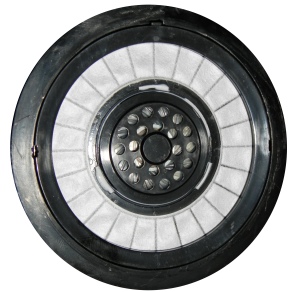
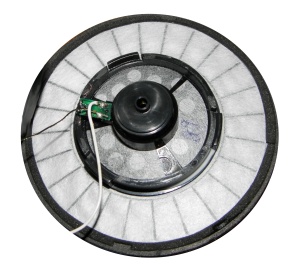
On the left the front side of the driver, on the right the rear side. This doesn’t look like a new driver though.
The headband padding is soft. The cups can tilt and swivel and the headband height adjustment works properly. This will fit most heads.
The HD660Pro headphones in this review are prototypes. I have been told they went in production without significant changes.
The cable is fixed, so not replaceable, and 2.5m long. It terminates in a 3.5mm TRS jack with a screw-on 6.3mm adapter.
The cable is supple and has a silicone feel to it and mildly microphonic. This means touching the cable is audible in the cups.
Isolation from outside noises is decent to good. The pads feel different from Beyerdynamic pads but are similarly comfortable.
There is enough room inside for ‘average’ sized ears.
specifications:
Type: Over ear, closed
Usage: studio
Driver type: dynamic
Driver size: 40 mm
Pads: replaceable, velour/Velvet, normal foam.
Inner pad dimensions: diameter: 60mm, depth: 25mm.
Foldable: No
Headphone connector: fixed
Cable entry: left side
Cable: 2.5m
Power rating: 0.1W
Max. Voltage: 1.8V (32Ω) / 4V (150Ω)
Max current: 60mA (32Ω) / 30mA (150Ω)
Max. S.P.L. 112dB
Impedance: 31Ω / 140Ω (measured)
Efficiency: 90dB @ 1mW (32Ω) / 89dB @ 1mW (150Ω)
Sensitivity: 105dB @ 1V (32Ω) / 98dB @ 1V (150Ω)
Weight: 320 g.
Clamping force: medium
Colour: Black with silver accents.
Accessories: 6.3mm adapter, pouch.
Sound description:
Bright and clear. Treble is sharp and accentuated but not ‘grainy/gritty’.
Mids are fairly neutral, dynamic and ‘open’ sounding and have good clarity. Bass does not sound that elevated and is well extended. Bassheads should look elsewhere. This headphone lacks warmth and ‘body’. The bass sounds somewhat ‘weird’ not realistic.
For monitoring the headphone is well suited. The elevated treble will let you hear details you otherwise may not hear. Voices will sound clear, even male voices.
Never mix or EQ on these headphones as you will end up with a dull sound.
Those planning on enjoying some music will be disappointed by the sharp sibilant sound.
The 150Ω version is slightly warmer sounding… not very different though but audible.
measurements
Below the frequency response of the 32Ω HD660Pro (Left, Right) 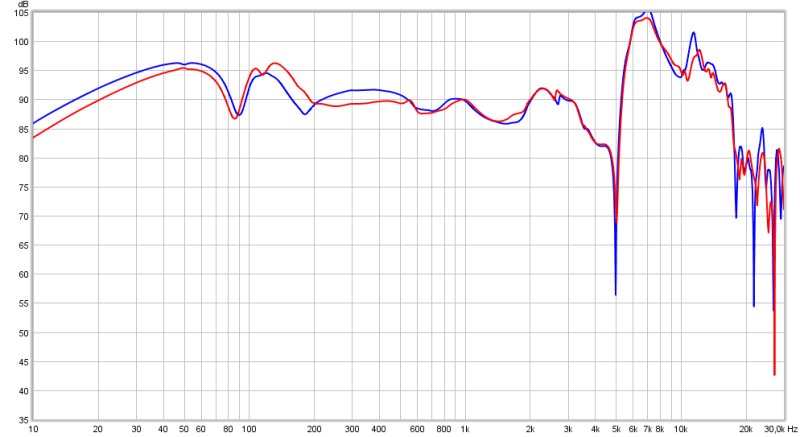
Below the frequency response of the 150Ω HD660Pro (Left, Right) 
Below the differences between the 32Ω and the 150Ω version.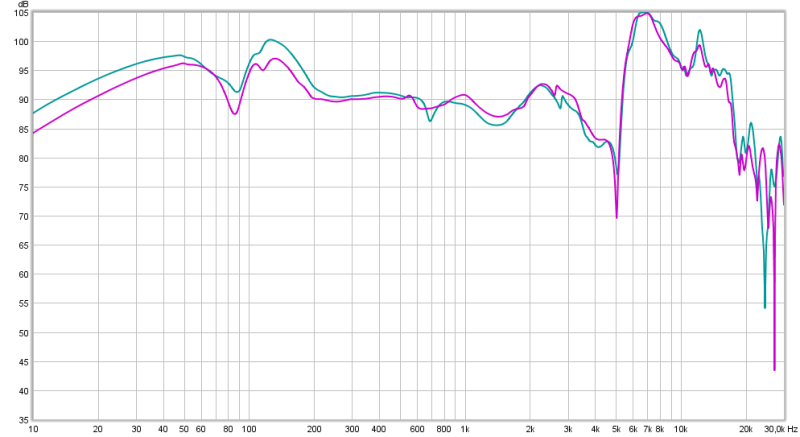 The tonal differences between the 2 versions are small. Small enough to fall into the tolerances range. Bass range is elevated but doesn’t sound elevated. This is because of the huge treble emphasis. I don’t know if the final currently available version still has such a huge peak or that they managed to lower it. A +15dB treble spike at 7kHz is way too much. Once the treble peak is lowered the sound is neutral and the slight bass emphasis (with a good seal) is audible.
The tonal differences between the 2 versions are small. Small enough to fall into the tolerances range. Bass range is elevated but doesn’t sound elevated. This is because of the huge treble emphasis. I don’t know if the final currently available version still has such a huge peak or that they managed to lower it. A +15dB treble spike at 7kHz is way too much. Once the treble peak is lowered the sound is neutral and the slight bass emphasis (with a good seal) is audible.
From 200Hz to 3kHz (important for voices and most instruments) is quite ‘flat’ and indeed, once the treble peak is EQ’ed or filtered out the mids sound very realistic, dynamic and clear (also once the treble peak is EQ’ed.)
compared to
The most logical comparison of the HD660Pro is with the Beyerdynamic DT770 There are a lot of commonalities between these headphones. The higher clarity (3kHz) and above all the enormous treble peak make these headphones differ. The DT770 is a bit infamous for it’s (fixable) treble peak but the HD660Pro takes this too extreme levels.
There are a lot of commonalities between these headphones. The higher clarity (3kHz) and above all the enormous treble peak make these headphones differ. The DT770 is a bit infamous for it’s (fixable) treble peak but the HD660Pro takes this too extreme levels.
Seal
Seal can be an issue with closed-back headphones. Breaking the seal (improper fit on the head) usually means a loss of (sub)bass. Below the effect of different levels of seal breach are shown .
Perfect seal, Seal broken with a pair of glasses, seal broken using a 6.3mm TRS plug for the 32Ω version.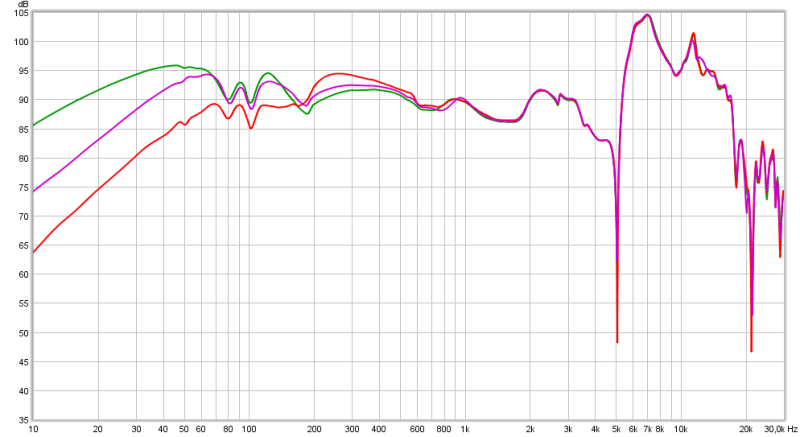
Below perfect seal, Seal broken with a pair of glasses, seal broken using a 6.3mm TRS plug and slightly lifted pads for the 150Ω version.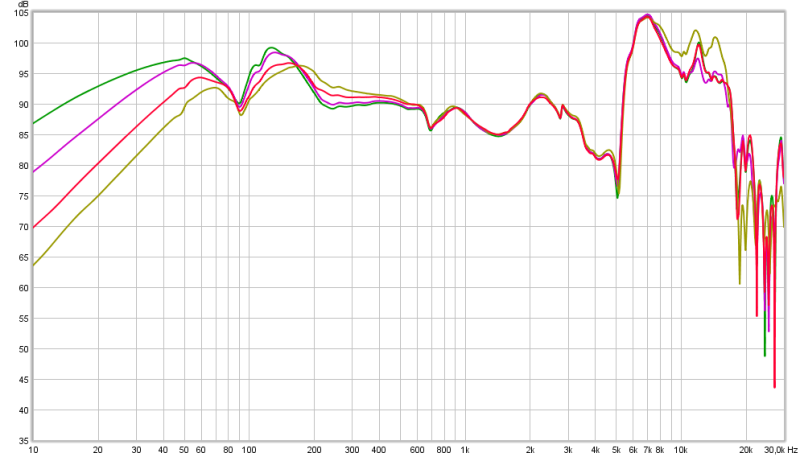
Like most other closed headphones the seal is quite important to get proper bass extension. Wearing (reading) glasses or having hair between the headphone and ears can diminish the bass response.
output resistance / damping-factor
As this is a dynamic headphone the frequency response might be amplifier output resistance dependent when certain higher output resistance amplifiers are used.
To test this the headphone is measured via a low impedance amplifier of 0.2Ω, at 10Ω, 32Ω 120Ω. These traces are overlaid so tonal balance changes can easily be seen. In the 32Ω version below the effect is a bit more pronounced (as expected) compared to the 150Ω version below the 32Ω plot. On a higher output resistance amplifier the output level will be lower as well. At 10Ω the level drops 2.8dB, at 32Ω it is 6.3dB and at 120Ω the level is 13dB lower. 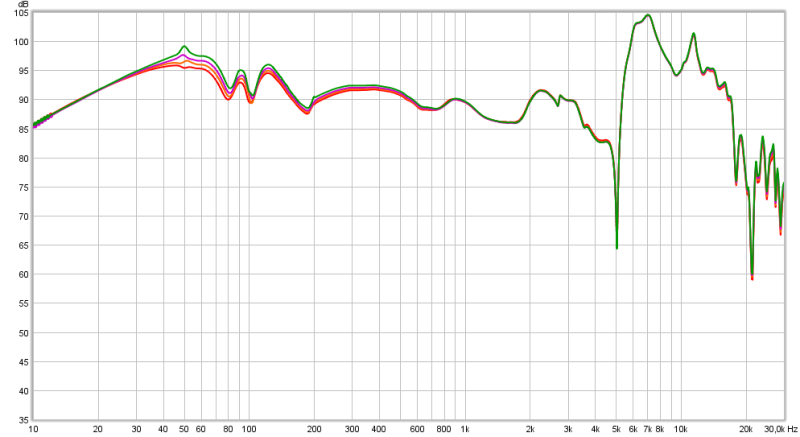
A higher output resistance will give a bit more bass boost. The resistance would have to be substantial before it becomes audible.
On a higher output resistance amplifier the output level will be lower as well. At 10Ω the level drops 0.6dB, at 32Ω 1.7dB and at 120Ω the level is 5dB lower. 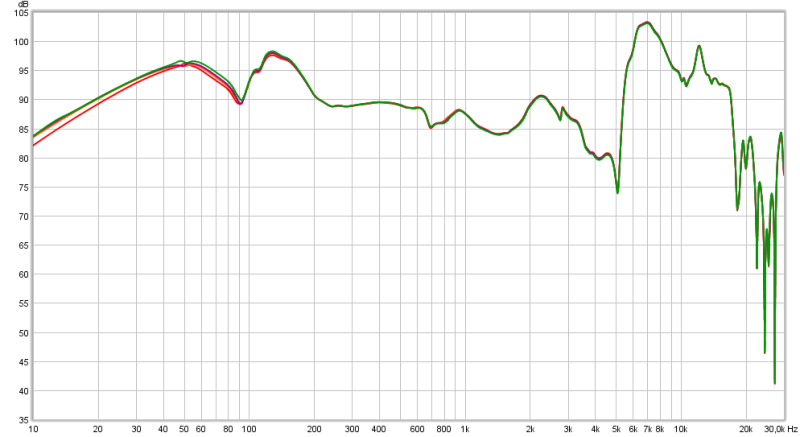 The effect of a higher output resistance is, of course, a lot smaller with higher impedance headphones. Also the relative attenuation is much smaller.
The effect of a higher output resistance is, of course, a lot smaller with higher impedance headphones. Also the relative attenuation is much smaller.
Below the distortion measurements of the HD660Pro/32 (Left channel).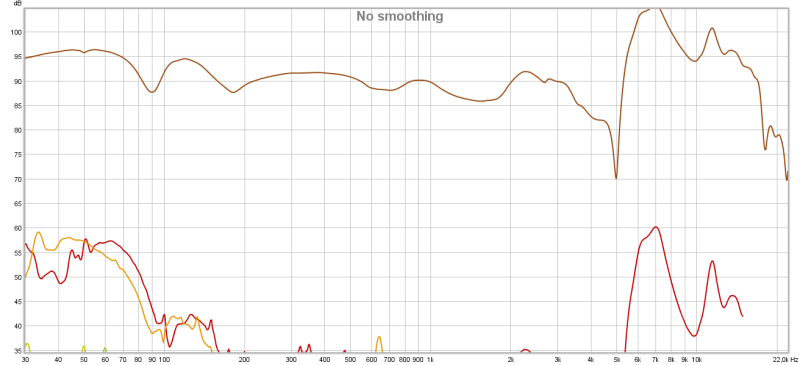
The plot above is in a dB scale, below the same measurement but in a percentage scale.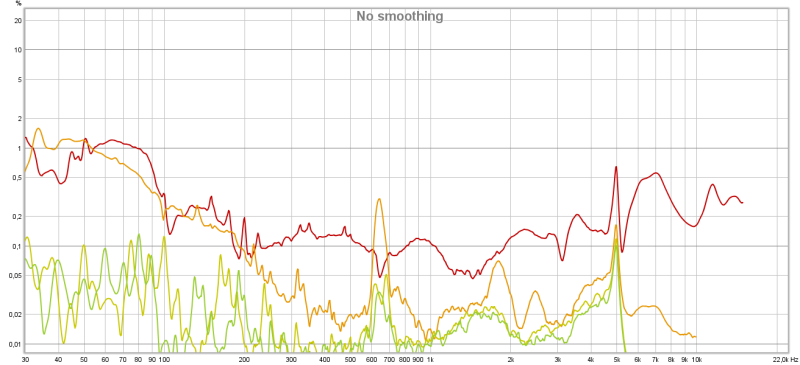
Below the distortion measurements of the HD660Pro/150 (Left channel).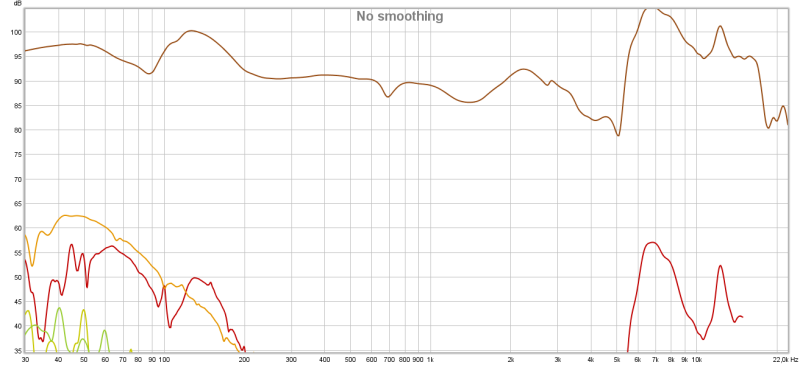 The plot above is in a dB scale, below the same measurement but in a percentage scale.
The plot above is in a dB scale, below the same measurement but in a percentage scale.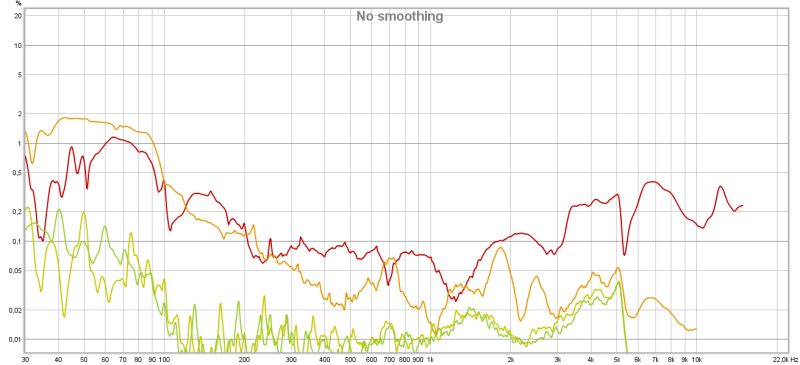
The distortion in the lower frequencies is as can be expected from a 40mm driver at 90dB SPL. From 100Hz upwards the distortion is quite low. Above 2kHz distortion starts to rise again but not to concerning levels.
The fact that 3rd harmonics are relatively high (but not very high) below 100Hz points towards some compression.
NOTE: The actual 2nd harmonic distortion above 200Hz may well be lower than 0.1%. A shortcoming (measurement limit) of my measurement rig.
linearity
Linearity is checked by measuring the frequency response 4x at levels of 70dB, 80dB and 90dB and then correct for the 10 and 20dB level differences and thus overlay the plotted lines Upto 80dB there are no signs of compression but above 90dB SPL some compression in the largest excursions (lowest frequencies) is becoming visible. Still not bad for a cheap headphone.
Time domain measurements
I usually don’t post these but more data is always welcome. below the phase response of the HD660Pro/32. The 150Ω version is very similar. Both headphones have an issue at 5kHz.
Below the Group Delay plot some readers like to see. Below the ground delay of the 150Ω version. This is very similar, again, as the 32Ω version so only one plot is shown.
In the frequency range between 70Hz and 150Hz there are some timing issues that may be caused by pad bounce issues. At these frequencies the pads do not behave that well.
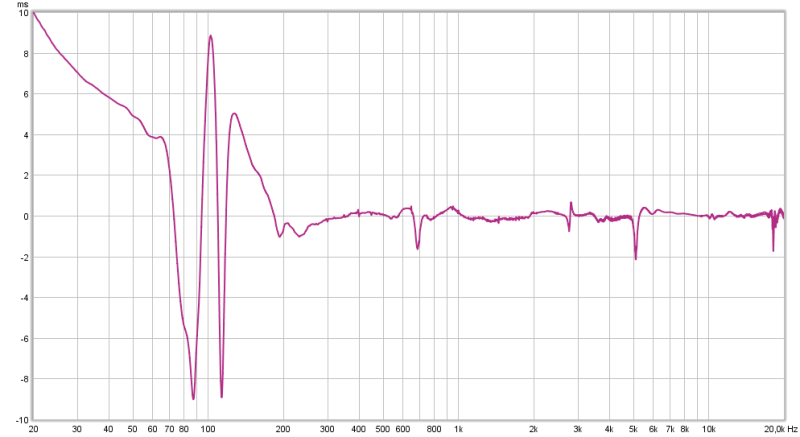
Speaking about pads. The HD660 Pro pads look a LOT like the silver DT770 pads. Below the frequency response of the HD660Pro fitted with the original pads and with the DT770 pads. There are some tonal balance differences between 500Hz and 5kHz. Also the pad bounce is at a much lower frequency in the Beyerdynamic pads.
Below the HD660Pro/150 (Left and Right are overlaid)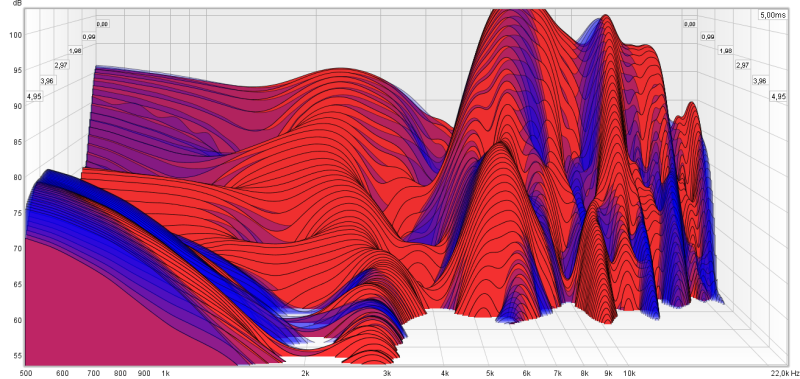
We see some resonance around 2.7kHz which is a bit longer. The 6kHz resonance is high but short lived. Above 10kHz some resonances but all short lived. Also around 550Hz there is some lingering. The energy doesn’t go down fast.
The 32 Ohm version is very similar so not shown.
Another form of looking in the time domain is the spectrum plot. The amplitude is colour coded and both the time scale and frequency scale differ as well.
Below the spectrum plot of the HD660Pro/150 (Left channel) 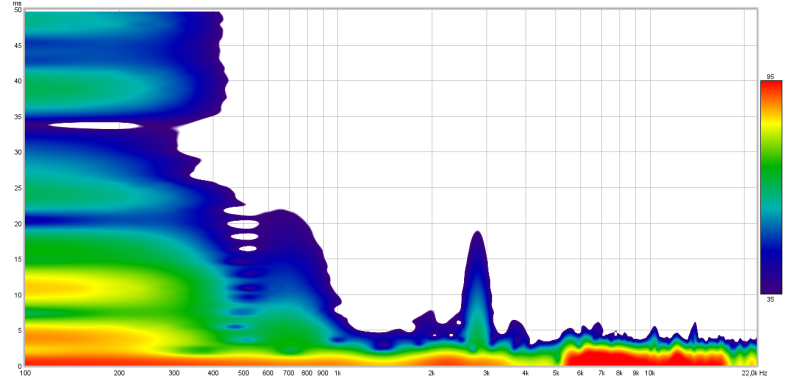 The poorer damping around 700Hz is visible, so are the issues around 2.7kHz.
The poorer damping around 700Hz is visible, so are the issues around 2.7kHz.
Below the step response with a dB scale (so not similar to an oscilloscope plot which has a linear scale). The step response (Left and Right channel overlaid) 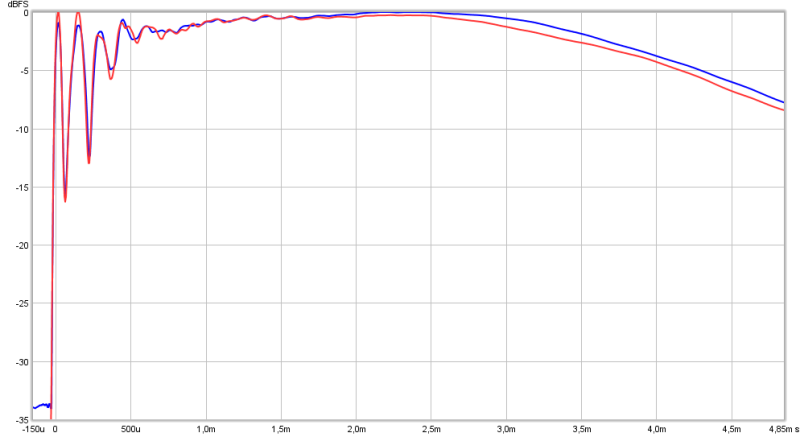
The rising edge reaches 0dB but also rings a LOT. Bass extension is good as can be seen by the horizontal part hardly dropping.
experiments
The treble peak may not be problem when using this headphone for monitoring voices and some instruments that do not have a lot of energy in the lower treble but for listening to music it is unacceptable.
Some experiments were done using various damping materials in front of the driver such as toilet paper (various plies) and felt of various thickness’s in order to see if the treble peak can be lowered enough using simple modifications. The upper treble above 10kHz is easily lowered. The most offending part, however, is the 6kHz peak. This one is hardly lowered regardless of the used materials.
The upper treble above 10kHz is easily lowered. The most offending part, however, is the 6kHz peak. This one is hardly lowered regardless of the used materials.
For this reason the only way to remove the sharp treble is to use a passive filter shown below.
The shown schematic values are only suitable for the 32Ω version,
The schematic is the same for the150Ω version but the inductor = 4.7mH, the capacitor = 68nF and the resistor must be 680Ω .
Below a picture of the actual filter soldered in series with the driver.

This modification, as a side effect because it removes the shrillness/brightness, makes one more aware of the elevated bass. For this reason I also covered the bass ports just above the cup hinges somewhat to lower the bass level a bit. This is not really needed but is how I prefer it. Below the differences between the stock HD660Pro and with the filter (and ports half closed) The treble peak has been removed without sacrificing treble extension. Also the upper mids are lowered slightly making the clarity a bit more natural. The partly closed bass ports have made the bass response a bit more linear as well.
The treble peak has been removed without sacrificing treble extension. Also the upper mids are lowered slightly making the clarity a bit more natural. The partly closed bass ports have made the bass response a bit more linear as well.
The rather large dip at 4kHz and around 12kHz make the treble a bit coarser and not very refined but at least it isn’t piercing any more which is far more annoying.
summary
The Superlux HD660Pro can be used as a cheap monitoring headphone with similar looks/comfort as the Beyerdynamic DT770 at considerable lower cost. The sound quality, however, is not Beyer quality nor should it be expected.
For music enjoyment this headphone is not really well suited nor to mix or EQ on. The treble peak is way too high for this.
When the headphone get’s some EQ the sound quality improves but still won’t be a top performer.
Very usable in the home studio and for monitoring voices and some instruments.
The cable is way too long for portable usage.
back to Superlux
back to measurements
home

Hi! First of all congrats for the webiste, it’s amazing. There’s nothing like this on the internet.
I was thinking about buying the SuperLux H660 Pro 150, but from what I ready, and I you want to enjoy music, you should go for the Beyerdynamic DT770. But are the SuperLux H660 Pro so awful? Is the difference with the Beyerdynamic DT770 so huge? What headphones would you recommend me for a budget up to 130€? I currently have the Grado SR80 but I do not know if it would be better to move to closed headphones to gain some isolation since everybody says that the quality with the open back headphones is better.
Thanks for your help!!
The problem is that I measured the prototypes and made some comments on the treble. Usually Superlux does something with the feedback. However, not always. I have measured several proto’s and in some cases they changed the production version. In this case I haven’t measured nor received any final versions. I did ask Superlux if the final version differed from the proto and the reply was that there were no changes.
Without any changes the treble is way too much for me.
The differences with DT770 are too big. The higher price of the DT770 is worth it over the DT770.
With a budget of around € 130.- I would recommend the AKG K371.
The SR80 is more ‘open’ sounding and more detailed but lacks in bass extension.
The SR80 being an on-ear has very different properties from over-ear.
Thank you so much for the quick answer and for the suggestion. Should I go for the Bluetooth version or for the wired one? Does it affect the sound quality?
Thanks again!
Only when you need or plan to use BT then buy the BT version. After a few years the battery will dy and render the BT headphone useless.
Hi, I was wondering by any chance, will you be doing a review on the Superlux hd330?
I wasn’t planning on it but might. It doesn’t cost much.
HD330 is being measured. Review might be up in a week or so.
Thanks for this review. I was going to buy these, but after reading your review I’m not so sure now.
I’m looking for a cheap pair of headphones, around the 50 USD mark. my intended use is for Deejaying electronic music and also listening to a variety of different music styles. What would you recommend?
Thanks
DJ-ing and listening to different music styles requires different types of headphones.
ok, s,o if I were to buy two, one for DJ-ing and the other for listening to music in that price range, which 2 would you recommend?
When it has to be Superlux: HD562 for DJ-ing
For music perhaps HD662EVO, HD681 (needs treble addressed)
Hello, thanks for your review. If I were to build a passive filter for the 150 Ohm version, how would I calculate the components? Thanks in advance 🙂
Good catch. Updated the review and added the info shown below.
The shown schematic values are only suitable for the 32Ω version,
The schematic is the same for the150Ω version but the inductor = 4.7mH, the capacitor = 68nF and the resistor must be 680Ω.
Thanks, i will try asap 😀
Hi there, if I use diy tuning filters like felt fabric. Would it be enough to tame the treble? I do like my headphones a bit bright though but not to an extend where it is +15db treble boost.
Passive reduction of lower treble by that many dB without completely removing all the treble above 10kHz is a tall order.
I’ve been using these as my main PC-headphones with the EDT- C-One softskin pads from my Custom Game when i need a closed back. Basically your Measurements gave me that idea and it seems to work quite well for me. A bit of sharpness is left, but also directly compared with another HD-660 Pro the treble sounds way better.
You might want to fix the bass response though because the lows feel more fat with the softskin pads and less treble and of course it will be more sweaty.
I’d really be curious how that change measures in reality, but even looking at the measurements of both headphones with different pads it totally makes sense, i think.
I haven’t got these Beyer pads so cannot test this alas.
Should still be worth a try, at least if someone has the Custom One/Custom Game Pads lying arround. I bought them after a review with better looking measurements in late 2020 for 32€ (39€ now) and more out of curiosity than of need. Buying new Beyer Pads would be almost half of the headphones price and the softskin pads might flake sooner or later.
Buying other headphones in the first place might be the better option, except if you want to EQ or tinker with them..
With the help of your measurements I built a simple EQ fix for the treble. AutoEQ was not helpful in my case as the filters were too narrow. I heard the peaks in slightly different positions, so it still sounded painful. Wide high shelf filters bring better results here imo.
Preamp: -2.7 dB
Filter 1: ON HSC Fc 5300 Hz Gain -2.0 dB Q 5.000
Filter 2: ON HSC Fc 5500 Hz Gain -3.0 dB Q 0.500
The more powerful filter is the first one. It has a Z-kind of shape because of the high “Q value”. It slightly boosts the frequencies between 3500-5000hz and rapidly lowers the frequencies after ~5500hz, which is what we want. The second filter smoothes out everything and helps against high treble.
It is still a rather shouty/sharp-sounding headphone, but with this EQ it should work as a “fun” V-Shape.
Conseguí estos auriculares y estoy bastante contento, pero últimamente estoy teniendo un problema y no se que puede ser o como solucionarlo; resulta que a volumen alto y con frecuencias bajas continuas los driver crepitan, distorsionan (se oye como si algo vibrace dentro), los he revisado y nada he encontrado.
I got these headphones and I’m quite happy, but lately I’m having a problem and I don’t know what it can be or how to fix it; It turns out that at high volume and with continuous low frequencies the drivers crackle, distort (it sounds as if something vibrates inside), I have checked them and I have found nothing.
Does this happen on both sides or only one side (channel) ?
A veces de un lado y otras de ambos. Gracias por la rápida respuesta!
Sometimes on one side and sometimes both. Thanks for the quick response!
And you are sure it isn’t the source/amp that is clipping ?
Maybe you can sweep the headphone using this tone generator ?
https://www.rapidtables.com/tools/tone-generator.html
No creo que sea la fuente, los he probado con varios amp y fuentes y el problema en algún momento aparece, no es siempre y aparenta no distorsionar la música (al menos audible) sino es más como un sonido agregado.
Leí a alguien con unos Beyerdynamic 770 pro con el mismo problema que lo soluciono al ver que había un pelo haciendo contacto con el driver. y un caso de otra persona con mis mismos equipos que en el driver derecho le apareció este problema a la semana y que posiblemente es un problema de fabrica.
Probando el generador de tonos, la mayoría de las veces el ruido aparece a 100hz hacia abajo, y siempre a alto volumen exceptuando algunos momentos que lo produce a db moderados.
Desde ya, muchas gracias!
Disculpas por el desconocimiento y las molestias.
Remove the pads, remove the foam disc.
Check for hairs in the foam disc and remove them if present.
You can also remove the foam disc, refit the pads without the foam disc and have a listen.
No, no los hay, ya lo he chequeado y además al no ser la mejor espuma que se puede tener, se los limpia y revisa periódicamente.
También probé escuchar con el driver a descubierto, dónde el problema persiste.
Alas, it seems to be a driver problem in that case or the driver is not loose somewhere in the cup. Taking it apart would be an option to see if something is loose inside.
They are cheap headphones in the end.
Asi es, la calidad de contrucción no es la óptima.
Gracias por todo!
Thanks for the review. It’s very detailed and clear but I have a question.
So, I had to choose one between HD 681, HD668B and HD 660 PRO. I wear my headphone over 12 hours in a day so had to go with most comfortable one.
Afaik 668B got some comfort and dongle problems so I ruled that out. HD 681 seemed like a good option but one of my friends owns it and said that I need to buy new pads or else they won’t be comfortable. Also mentioned about the bad plastic quality.
So I ordered a HD 660 PRO just now. I’ll just use it for listening to music and playing games. Not an audiophile and always used cheap headsets like CM CH321 or JBL T500 till now. Never used like this one before.
Did I make good choice? What would you go with if you were in my place?
The HD660 Pro is the sturdiest of these 3.
The treble peak (sharpness) is the worst.
Out of the box the HD668B is warm/neutral
HD681 is the most ‘fun’ but you need to buy the velvet pads as the pleather ones are not very comfy.
Thanks for the fast answer.
So 660 PRO is the sturdiest and comfiest out of the box but what about the sound quality? is it just treble or is there smt else wrong with it?
not sure if you’ll get notified about this, i’m kinda in your situation rn as i got this budget and my reference from headphones is jbl t500. how’s been your experience til now? was it an upgrade? how do you find it to listen to music? what about the treble? i’d be glad to know as i’m wondering pretty much between the same options.
Treble is the biggest issue, followed by the bass.
The latter can be lowered with partly taping off the ports.
This is a cheap headphone though and one can only expect so much from it.
Hello, I apologize for the silly question. I have old Sennheiser HD 515. I have the option to choose between Superlux 660 Pro, HD681Evo, and Sennheiser HD 559. I enjoy immersive music, sometimes with opera elements. It’s almost impossible without equalizer. I previously had cheap Somic headphones that, thanks to vibration and the Cmedia chip, could sound better than their price suggests.
between these 3 options the HD681EVO may be the best option but is probably the one with the shortest lifespan.
Thank you for your response, but according to the tests (https://autoeq.app/), the regular 681 has a better curve. Should I not consider these tests?
hey! love what you do.
i’m not an audiophile myself really, but i love listening to music and i’ve been looking for some headphones with a budget around 50 dollars. i’ve kinda read all about these models and i think this is the most complete review i’ve seen, even tho sometimes i kinda doubt if it actually translates to every ear; as i’ve never own any hi-fi stuff, i dunno if i will really feel any of this. one thing is for sure tho, that peak on that treble seems scary.
however, the thing is: i live in argentina and everything costs twice as it does in the USA, and some stuff is cheaper than other.
what would you recommend to me, if i want to listen to music? 681EVO, 662EVO, 668b or 681? consider: pretty much the 681EVO, 662 EVO and 668b costs literally the same (and the 668b comes with nice pads to replace the ugly originals for the same price as the other two) and the 681 is the cheapest by far. there is a gap of 30 usd between the other three and the hd681. don’t get me wrong: if it sounds better, i’ll spend more. just wanna know if its worth it
thanks!
My preference would be the HD662-EVO when used stock (as is)
Otherwise HD681 but with velour pads and some EQ which would probably become the same price due to the purchase of pads.